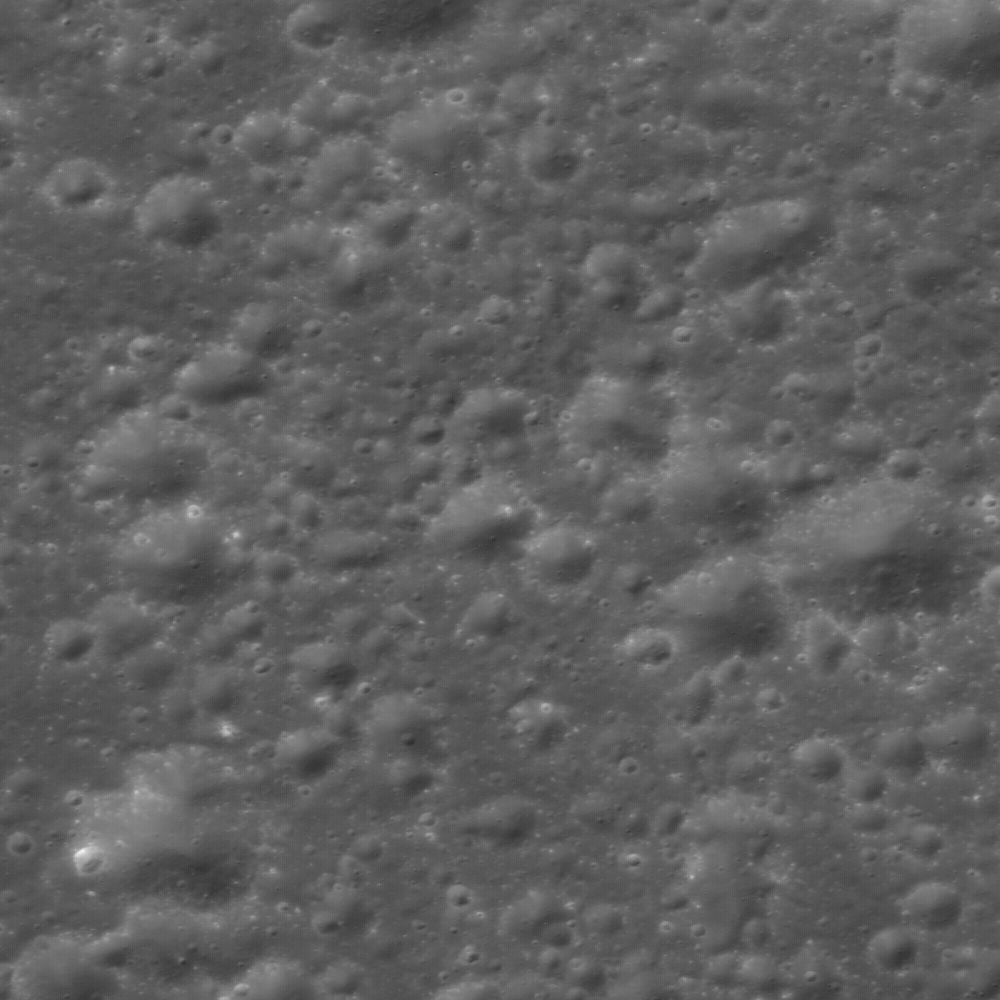
When people envision a "moonscape" it probably looks something like this -- craters, craters everywhere. There are two types of impact craters on the Moon: primary and secondary. Primary craters form as the result of an asteroid or comet (or spacecraft) impacting the Moon. Secondary impact craters formed from the impact of ejecta expelled during primary crater formation. Secondary impact craters dominate this scene, possibly from the impact event that created nearby Jackson crater (70 km diameter), a fresh crater located 68 km to the west. Geologists use small secondary craters to help unravel the stratigraphy of the lunar surface. These secondary craters reside on the floor of a 14 km diameter crater. What is the age of this host crater? Assuming our postulation about these secondary craters originating from the Jackson event is correct, then it is a fair bet that the Jackson impact postdates the formation of this crater. If you look at the bottom of the NAC frame below, you can see that this crater also has a very subdued rim, in contrast to Jackson's well-defined rim, providing more evidence that this crater predates the Jackson impact. What do you think?
But how can we figure this out for sure? Nothing replaces the utility of samples and in-situ exploration. For example, when human explorers collect samples both from the regolith near this cluster of secondary craters and Jackson crater, then the impact melts can be radiometrically age-dated in a laboratory to provide absolute formation ages. If the ages determined for the regolith samples obtained from this crater cluster match the age dates determined for the Jackson impact, then they probably originated from the same impact event.
Published by Samuel Lawrence on 23 November 2009